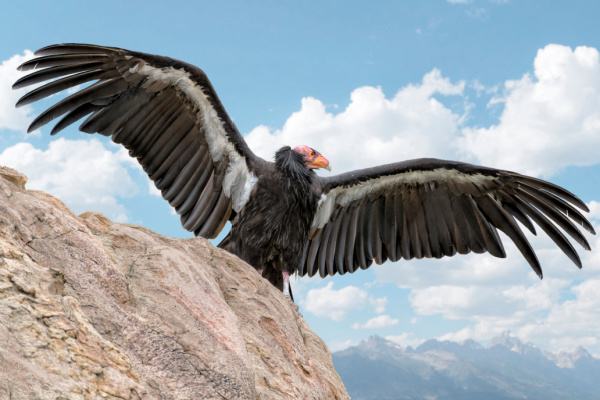The avian influenza stalking wild and domestic bird flocks across the country has killed at least six endangered California condors since March and is suspected of killing another dozen, according to USA Today.
The U.S. Fish and Wildlife Service said it’s now attributing all condor deaths in the Arizona-Utah wild flying population to suspected cases of the virus. The deaths represent 15% of the region’s condor population.
Observers with The Peregrine Fund first saw a sick condor in northern Arizona on March 9, the wildlife service said. The condor was found dead under her nest 11 days later, and testing confirmed she was positive for the highly contagious flu. Since then, 17 condors have died and five others are “receiving supporting care” and being tested, the wildlife service said.
The highly contagious avian flu, H5N1, has affected more than 58 million birds in domestic poultry populations and wild flocks across the U.S. and continues to spread, federal officials report. As of March 10, the H5N1 virus had been detected in wild birds or poultry in 16 countries in Latin America and the Caribbean and in “most of the rest of the world,” according to the CDC.
As USA Today reports, H5N1 has exploded across the U.S. since its first detection here in wild birds in January 2022. The virus has been documented in every state but Hawaii and across every Canadian province. Millions of chickens and other domestic fowl have been euthanized and the virus has been detected in more than 140 bird species.
The virus has:
- Spread to 17 species of wildlife in 22 states, including 60 red fox, 16 harbor seals and 14 striped skunks.
- Been documented in more than 777 outbreaks.
- Resulted in 4,672 reports in wild birds.
- A study in March concluded bald eagle nest failures were piling up at “an alarming rate” as the adults die after contracting the highly contagious flu from other birds.
The Peregrine Fund shares the following facts about condors:
- They’re one of the largest birds in North America, measuring 9.5 feet from wing tip to wing tip.
- They’re one of the longest-living raptors and may live to be 50 years old or more
- Unlike some other birds, there’s no difference in physical appearance between male and female condors.
- Their wing tips point up when they fly, helping to reduce drag and soar for long periods of time.
- They sleep or roost in tall trees or cliff crevasses
- Like some other large birds, they poop on their legs when they get hot to stay cool as it evaporates
- Lead poisoning is responsible for 49.8% of the 253 condor deaths where a cause could be determined since 1992.
The condor’s road to recovery from the brink of extinction in the early 1980’s is nothing short of a miracle. Which is why their current death rate is sparking such a reaction and response.
- 1982 – Only 22 condors survived in the wild
- 1987 – The last wild condor was captured
- 1988 – A captive breeding program began and the first chick was hatched in a cooperative effort with the wildlife service and partners
- 1992 – Two captive-bred condors were released in Ventura County, California
- 1994 – Captive condors had laid more than 100 eggs
- 2006 – First nesting by free flying condors in more than 100 years was documented in Big Sur California.
- 2022 – The total worldwide population was roughly 561, according to the National Park Service. That includes 347 condors in the five wild flocks.
How you can help:
- Report dead or injured birds to a state wildlife agency
- Keep family and pets away from wildlife
- Do not feed or handle sick or dead animals
- Prevent contact between wild and domestic birds
- Leave young animals alone and allow parents or a wildlife rehabilitator to collect them.
—
Photo Credit: Barbara Ash / Shutterstock.com
